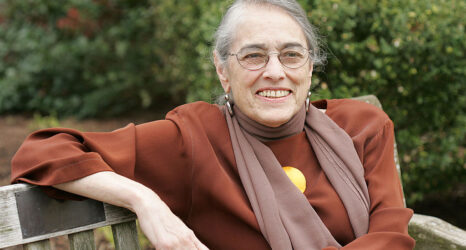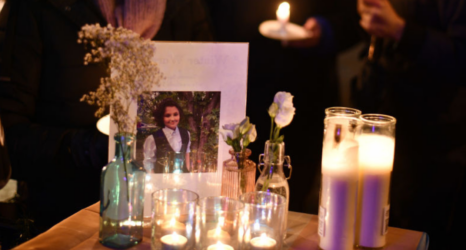In 1991, Rep. Louise Slaughter marched to the Senate alongside six other female members of Congress to demand a delay in Clarence Thomas’ confirmation to the Supreme Court in response to Anita Hill’s testimony. In 1994, she co-authored the Violence Against Women Act, and she continued to fight against sexual assault in all fields—authoring several amendments over the years to the annual National Defense Authorization Act to address what she called a “destructive culture of sexual violence.” In 2010, she led the push to pass the Affordable Care Act—defying numerous death threats in the process. And just last September, Slaughter sponsored the Patsy T. Mink Gender Equity in Education Act of 2017, which would work to fully implement gender equality through Title IX in schools of all levels, in the House.
On March 16, Slaughter died at 88 years old in Washington, D.C. In her 16th term, she was the oldest sitting member of the House of Representatives.
“I am devastated over the loss of Congresswoman Louise Slaughter, an incredible feminist leader and a dear friend,” Feminist Majority President Eleanor Smeal said on Twitter. “I have worked with Congresswoman Slaughter for decades furthering the rights of women. She ran for the New York State Assembly, and later the U.S. Congress, to fight for women’s reproductive rights. As co-chair of the Pro-Choice Caucus, she worked tirelessly to defend and advance a woman’s right to make her own healthcare decisions. Louise was always proud to represent Rochester, the home of Susan B. Anthony. When she became the first women chair of the House Rules Committee, she hung Anthony’s photograph in front of her on the committee room wall, the only woman pictured among a sea of men. Today, appropriately, Congresswoman Louise Slaughter’s portrait hangs in the committee room, reminding everyone of her legacy. I will miss her greatly.”
In the early 1950s, Slaughter graduated from her home state’s University of Kentucky with a degree in microbiology and a master’s in public health—despite neither fields being very welcoming to women. Afterward, Slaughter moved to New York found herself increasingly active in local government after she fought to preserve a beech-maple forest in the Rochester area in the 1970s. In 1982, she successfully won a spot in the New York State Assembly. Four years later, she was elected to the House of Representatives—and became the first and only microbiologist in the chamber.
Even though she was initially just one of 29 women in the House, Slaughter did not shy away from speaking up—and claiming seats at the table. She gained a reputation for her thick Southern accent and blunt manner of speaking, and she stuck to her values, even when that meant breaking with party lines. Honored by her opportunity to represent Susan B. Anthony’s district in the state of New York, Slaughter once hung a photo of the iconic suffrage leader among the all-male portraits in the chambers of the Rules Committee, a powerful force in Congress which she was the first woman to lead as Chair. Having once denounced the “men in blue suits” debating abortion, she also went on during her tenure to found the Congressional Pro-Choice Caucus.
Through her charisma and persistence, Slaughter inspired many female leaders, both in and out of government, and her death has sent shock waves throughout the country. Smeal described her as “one of the most powerful women to have ever served in the House of Representatives.”
“Louise was a trailblazer,” House Minority Leader Nancy Pelosi said in a statement. “Her strong example inspired countless young women to know their power.”





